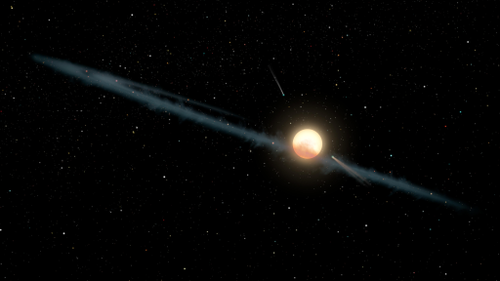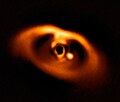
In astronomy, a disrupted planet [1] [2] is a planet or exoplanet or, perhaps on a somewhat smaller scale, a planetary-mass object, planetesimal, moon, exomoon or asteroid that has been disrupted or destroyed by a nearby or passing astronomical body or object such as a star. [1] [2] Necroplanetology is the related study of such a process. [3] [4]
Contents
The result of such a disruption may be the production of excessive amounts of related gas, dust and debris, [5] which may eventually surround the parent star in the form of a circumstellar disk or debris disk. As a consequence, the orbiting debris field may be an "uneven ring of dust", causing erratic light fluctuations in the apparent luminosity of the parent star, as may have been responsible for the oddly flickering light curves associated with the starlight observed from certain variable stars, such as that from Tabby's Star (KIC 8462852), RZ Piscium and WD 1145+017. [3] [4] Excessive amounts of infrared radiation may be detected from such stars, [6] suggestive evidence in itself that dust and debris may be orbiting the stars. [5] [7] [8] [9]








